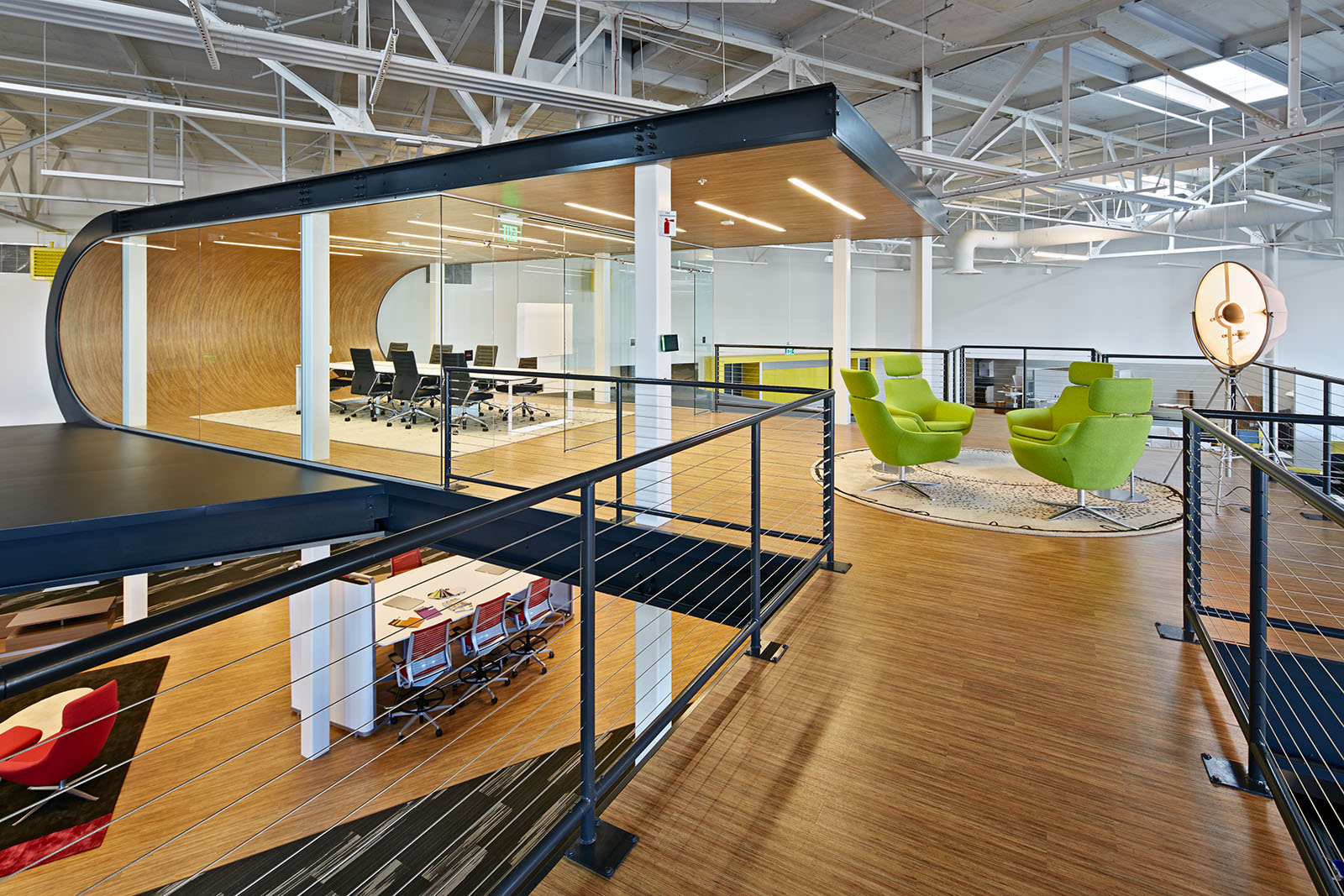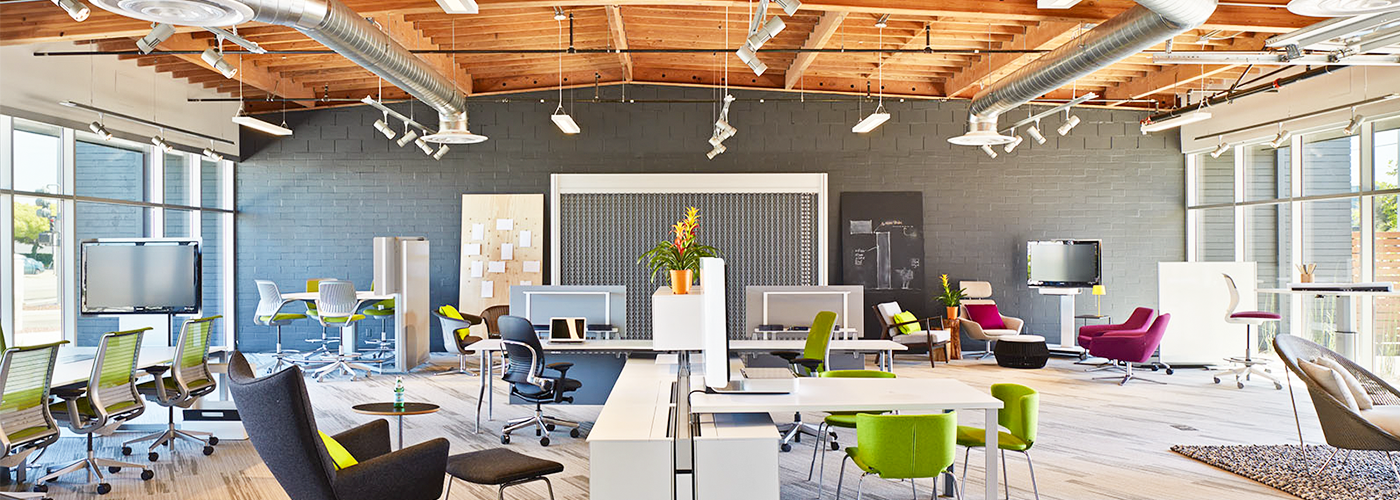An intangible power emanates from the spaces in which we live and work. It touches and shapes our behavior, our perceptions, and our interactions. When designed well, a space can make you feel deeply appreciative (and, in my case, perhaps a little jealous) of the amazing people who can so artfully shape that kind of visceral experience. It was this same power that touched me when I made my first recruiting trip to California to join One Workplace as their Creative Director.
I knew I wanted to belong the moment I walked through the door. Perhaps it was the feeling of excitement from a long trip, or maybe it was jet lag, but something was happening. I sensed that I was much more than just a visitor to this place, and my gut told me this should be my home. Here was an organization that shared my values, spoke my language, and was doing the kind of work I wanted to be part of. I felt all of those things within the first few seconds of entering the office – before I had even met anyone.

A glimpse of One Workplace from the inside. Photo by Bruce Damonte.
It would be an exaggeration to say that the design of an office building made me pack up my family and move them 2,900 miles across the country. Ultimately, the people compelled me to make the leap. At the same time, however, I would be lying if I said the space didn’t leave a lasting imprint on my mind. Their space told me a story about that company and its culture.
The Intersection of Space and Culture
Culture is defined by the way we think, feel, and interact with each other. For entrepreneurs, culture often represents the make-or-break ingredient that propels their teams through the difficult startup phase – or it can be the missing piece that dooms them to inevitable collapse.
While culture begins at the top, it’s also reinforced by every other factor surrounding a team. Every decision, every conversation, and every engagement is a chance to either strengthen or dissolve the cultural bonds between teammates or in partnerships.
Your work environment conveys a message about what you value, who you are, and where you are going. Tweet This Quote
The physical space in which we choose to have these interactions plays a key role in shaping that experience. Space can accelerate stronger cultural bonds, or it can block those connections and even break down relationships.
In many cases, space is simply shaped by circumstances. The scrappy “make do with whatever you have” attitude can often overcome even the worst physical working conditions. But over time, and with scale, that powerful optimistic perspective tends to fade – and the spaces in which we choose to work become even more important.
This impact grows significantly whenever an organization reaches a size where they begin making serious and conscious decisions about their workspace. Working from an old folding table is fine when you are fresh with the idealism of converting a wild hunch into a functioning business. But the moment you start actively shaping and taking ownership over that space, your decisions have a magnifying effect on your organization’s culture – either pointing out sore spots or amplifying areas of positivity.
Spaces Tell a Story and Create Magic
Over time, these decisions also begin to tell a subliminal story to your customers, partners, investors, and team. This story shapes how the world sees you and your endeavor. Your work environment conveys a message about what you believe, what you value, who you are, and where you are going. A simple, organized, and spartan environment tells a very different story than a complex, cluttered, or embellished one. Either experience may be appropriate, so long as it aligns with the cultural story you wish to tell.
Smart leaders know to never leave the experience of your workplace to chance. Tweet This Quote
For example, last year the video game company King, makers of the addictive mobile platform Candy Crush, began an endeavor to create engaging and transformative new environments for their global offices in Stockholm and Barcelona. Working with Swedish design firm Adolfsson & Partners, the team at King created a new kind of workplace by building a fantasy inspired Norwegian forest. Reaching out of the heart of their Stockholm office is a deeply textured and layered grove of symbolic trees, canopies, and hillsides. It was designed to create “moments of pause,” where creative insights will bloom.
King intentionally contrived this kind of over-the-top, whimsical, and fun physical work atmosphere that would allow their team to prosper. When describing their latest office renovations in Barcelona, Studio Head Alvaro Duarte said, “Happy people make good games,” and that it was his job “to give the people the right environment where the magic happens.” King has created places where their employees feel completely enveloped in the mission of the company and their collective passion for making games.
How To Shape Your Culture
As leaders, it is important to recognize that space shapes culture and behavior. We have to intentionally shape it. Whether your culture derives from spontaneous and informal interactions, or from rigid and careful processes, it’s our job to create environments where people can “make the magic happen.” The following are several tips for positively shaping culture through space.
- In a short statement, describe your desired organizational culture.
- Identify any specific areas within your workplace that support or align well with that vision. Consider entire buildings, individual rooms, or specific work tools and technologies.
- Identify any areas that conflict with that vision.
- Brainstorm with your team to generate ideas for reinforcing the successful spaces and reimagining the unsuccessful ones. The challenge is to ensure that all improvements directly relate back to achieving the desired culture statement.
- Reduce the priority of any suggested improvements that do not make an immediate cultural impact.
Consider the culture you wish to foster, and decide to create the kinds of spaces that promote aligned behaviors. Tweet This Quote
As an example, one way I might describe One Workplace’s culture is as a collaborative team built on trust, shared commitments and a family-like atmosphere. We welcome customers and partners as if they were guests in our homes.
When working with San Francisco architecture firm Design Blitz to design our headquarters showroom in Santa Clara, a key cultural feature we wished to explore was the elimination of a formal reception desk. We did not want guests to be met by a barrier with a posted sentry. Instead, we wanted to welcome them into the heart of our workspace.
As leaders, it is important to recognize that space shapes culture and behavior. Tweet This Quote
Visitors enter through a small vestibule and walk into a space we refer to as the Work Café. Much like the kitchen in our own homes, the Work Café serves as the hub of all of the action within our office. This is where our team gathers to share a meal, have a conversation, or simply feel part of the bustling activity. It is also where we welcome our guests because it is the space that most clearly tells the story of who we are.
Simple exercises such as the ones above are a quick way to make sure you are approaching the shape and utilization of your workspace with intentionality. Consider the culture you wish to foster, and decide to create the kinds of spaces that promote aligned behaviors. Your space will tell a story and shape your culture regardless of whether you choose to actively participate in it or not. Smart leaders know to never leave the experience of your workplace to chance.



